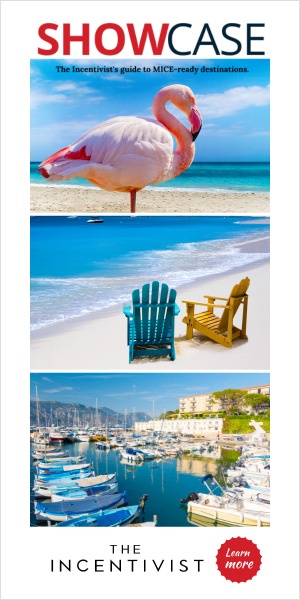Instilling health security into business events is the only way to repair the damage done to the industry by the COVID-19 pandemic, said Dr. Jonathan Spero, M.D., president, founder and CEO of InHouse Physicians, in a recent SITE Global webinar on health security in a post-COVID-19 world.
Spero, who is also the president, founder and CEO of InHouse Physicians, joined Kevin Regan, global director of Charters & Incentives for Azamara and Terri Brock, senior manager, Executive Meetings for Abbott Laboratories, for the discussion, which was moderated by SITE president Jenn Glynn.
Spero, whose business provides high-quality medical care for attendees at meetings and events, explained that COVID-19 and other viruses are now a fact of life and planners are going to have to take a page from the public health playbook and build health security protocols into their programs. These protocols, he said, have to include strategies for prevention, detection and response or PDR.
Brock, who has worked with Spero’s company, says that having PDR strategies in place is essential. Planners have to be able to go to their clients or executives with a plan if they want to alleviate the fears around travel and meeting that have arisen as a result of the pandemic.
A PDR checklist
Prevention
Benjamin Franklin’s axiom that an ounce of prevention is worth a pound of cure has never been truer. Spero’s prevention recommendations include:
- Have a Sick Attendee/Employee Policy: Planners have to sit down with their clients, HR department and/or third-party healthcare provider and come up with a policy to deal with sick attendees and employees. “It has to be something that is enforceable and you can monitor,” said Spero. It should include rules around attendees/employees staying home if they are sick, and not going to meeting/event if they become sick during a program. He also advises planners to think about what kind of pre-con health screening should be done and who should do it. For example, a pre-conference survey of attendees asking about risk factors for potential exposure (travel to country with outbreak, possible community exposure, etc.) The policy also has to determine who is going to keep that personal information and ensure that privacy concerns are met.
- Have a disinfection policy/agreement with the venue. “In high-traffic areas, you might want to be doing disinfection and cleaning every hour,” said Spero. “Staff may be coming in after every breakout session and cleaning the room with products that actually kill viruses.”
- Line-up a vetted healthcare provider in the destination to do testing should an employee or attendee become ill.
Detection
A protocol for screening attendees/employees on-site should also be established. Planners have to think about what that will include (temperature checks, for example) and how often it will be done. Spero reported that his company is currently monitoring critical infrastructure workers at a lot of large companies and quite a few of them have included temperature checks in the monitoring process. “Employers and corporations are used to that [temperature check] now so bringing it into the meeting place is not going to be too disruptive for them. It’s actually going to make them feel better,” he said. Once you’ve decided on your detection tools, you have to establish frequency. Are you going to do it every morning? Are you going to do it every time they go into a general session?
Response
Diagnosis is the first step in any response plan. Spero recommends working with a company like his and/or finding a healthcare provider in the destination that can perform tests, etc. He said the fact that the meeting industry is likely to start to really ramp up this winter is problematic. “It’s flu season. If you have a January kick-off meeting or something in February, you could have a lot of people attending with flu or COVID-19. So when that person comes down coughing and say they have a fever, you have to a plan in place to determine is its flu or COVID-19. That means you have to provide access to testing.”















